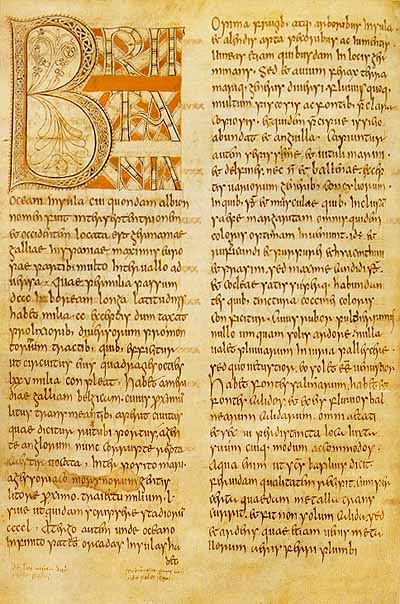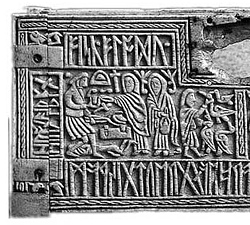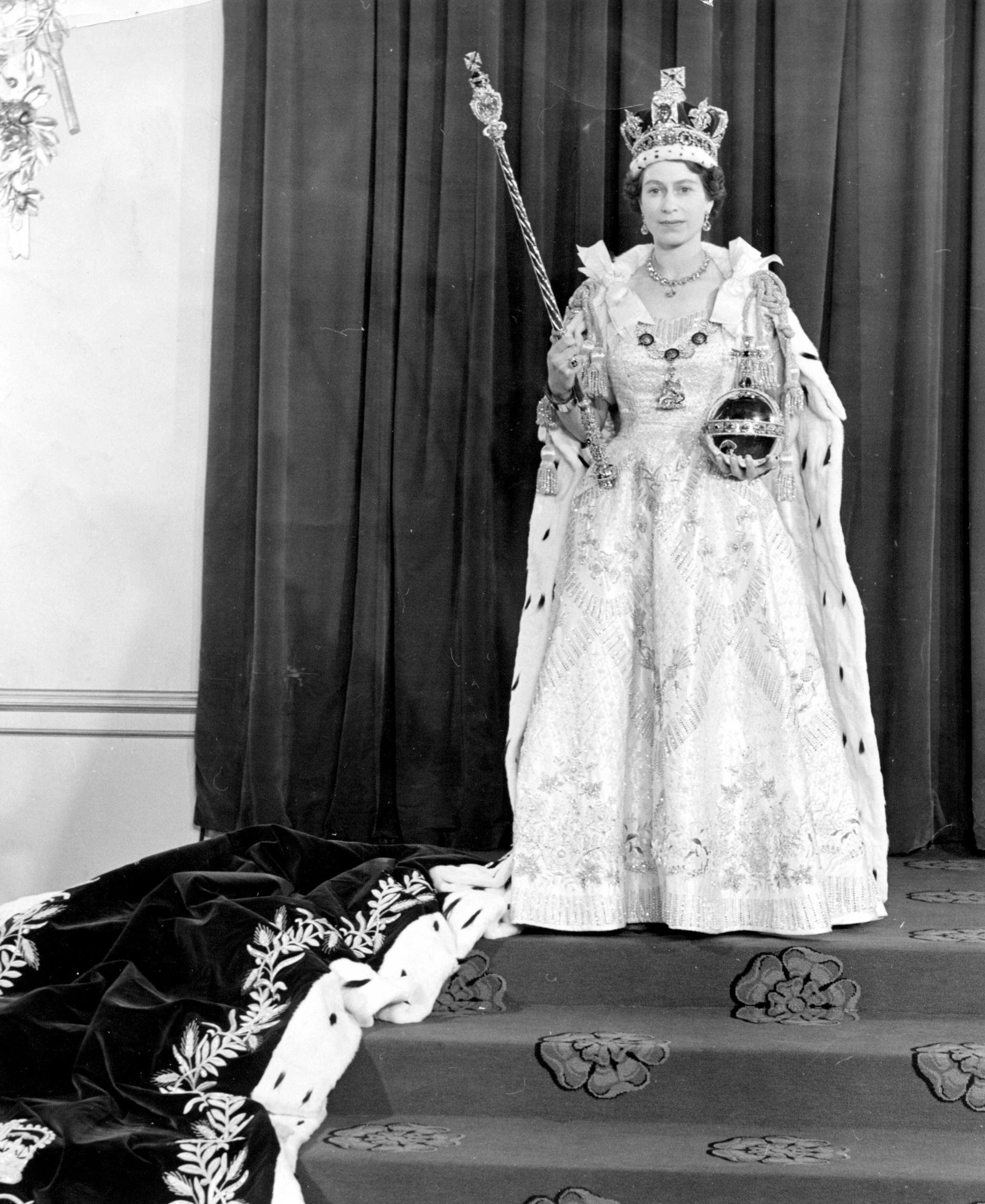|
Sutton Hoo Helmet
The Sutton Hoo helmet is a decorated Anglo-Saxon helmet found during a 1939 excavation of the Sutton Hoo ship burial, ship-burial. It was thought to be buried around the years and is widely associated with an Anglo-Saxon leader, King Rædwald of East Anglia; its elaborate decoration may have given it a secondary function akin to a crown. The helmet was both a functional piece of armour and a decorative piece of metalwork. An iconic object from an archaeological find hailed as the "British Tutankhamen", it has become a symbol of the Early Middle Ages, "of Archaeology in general", and of England. The visage contains eyebrows, a nose, and moustache, creating the image of a man joined by a dragon's head to become a soaring dragon with outstretched wings. It was excavated as hundreds of rusted fragments; first displayed following an initial reconstruction in 1945–46, it took its present form after a second reconstruction in 1970–71. The helmet and the other artefacts from the ... [...More Info...] [...Related Items...] OR: [Wikipedia] [Google] [Baidu] |
Iron
Iron is a chemical element; it has symbol Fe () and atomic number 26. It is a metal that belongs to the first transition series and group 8 of the periodic table. It is, by mass, the most common element on Earth, forming much of Earth's outer and inner core. It is the fourth most abundant element in the Earth's crust, being mainly deposited by meteorites in its metallic state. Extracting usable metal from iron ores requires kilns or furnaces capable of reaching , about 500 °C (900 °F) higher than that required to smelt copper. Humans started to master that process in Eurasia during the 2nd millennium BC and the use of iron tools and weapons began to displace copper alloys – in some regions, only around 1200 BC. That event is considered the transition from the Bronze Age to the Iron Age. In the modern world, iron alloys, such as steel, stainless steel, cast iron and special steels, are by far the most common industrial metals, due to their mechan ... [...More Info...] [...Related Items...] OR: [Wikipedia] [Google] [Baidu] |
England
England is a Countries of the United Kingdom, country that is part of the United Kingdom. It is located on the island of Great Britain, of which it covers about 62%, and List of islands of England, more than 100 smaller adjacent islands. It shares Anglo-Scottish border, a land border with Scotland to the north and England–Wales border, another land border with Wales to the west, and is otherwise surrounded by the North Sea to the east, the English Channel to the south, the Celtic Sea to the south-west, and the Irish Sea to the west. Continental Europe lies to the south-east, and Ireland to the west. At the 2021 United Kingdom census, 2021 census, the population was 56,490,048. London is both List of urban areas in the United Kingdom, the largest city and the Capital city, capital. The area now called England was first inhabited by modern humans during the Upper Paleolithic. It takes its name from the Angles (tribe), Angles, a Germanic peoples, Germanic tribe who settled du ... [...More Info...] [...Related Items...] OR: [Wikipedia] [Google] [Baidu] |
Monk
A monk (; from , ''monachos'', "single, solitary" via Latin ) is a man who is a member of a religious order and lives in a monastery. A monk usually lives his life in prayer and contemplation. The concept is ancient and can be seen in many religions and in philosophy across numerous cultures. The Greek word for "monk" may be applied to men or women. In English, however, "monk" is applied mainly to men, while ''nun'' is typically used for female monastics. Although the term ''monachos'' is of Christianity, Christian origin, in the English language ''monk'' tends to be used loosely also for both male and female ascetics from other religious or philosophical backgrounds. However, being generic, it is not interchangeable with terms that denote particular kinds of monk, such as cenobite, hermit, anchorite, or Hesychasm, hesychast. Traditions of Christian monasticism exist in major Christian denominations, with religious orders being present in Catholicism, Lutheranism, Oriental Ort ... [...More Info...] [...Related Items...] OR: [Wikipedia] [Google] [Baidu] |
Order Of Saint Benedict
The Benedictines, officially the Order of Saint Benedict (, abbreviated as O.S.B. or OSB), are a mainly contemplative monastic order of the Catholic Church for men and for women who follow the Rule of Saint Benedict. Initiated in 529, they are the oldest of all the religious orders in the Latin Church. The male religious are also sometimes called the Black Monks, especially in English speaking countries, after the colour of their habits, although some, like the Olivetans, wear white. They were founded by Benedict of Nursia, a 6th-century Italian monk who laid the foundations of Benedictine monasticism through the formulation of his Rule. Benedict's sister, Scholastica, possibly his twin, also became a religious from an early age, but chose to live as a hermit. They retained a close relationship until her death. Despite being called an order, the Benedictines do not operate under a single hierarchy. They are instead organized as a collection of autonomous monasteries a ... [...More Info...] [...Related Items...] OR: [Wikipedia] [Google] [Baidu] |
Ecclesiastical History Of The English People
The ''Ecclesiastical History of the English People'' (), written by Bede in about AD 731, is a history of the Christian Churches in England, and of England generally; its main focus is on the growth of Christianity. It was composed in Latin, and is believed to have been completed in 731 when Bede was approximately 59 years old. It is considered one of the most important original references on Anglo-Saxon history, and according to some scholars has played a key role in the development of an English national identity. Overview The , or ''An Ecclesiastical History of the English People'', is Bede's best-known work, completed in about 731. The first of the five books begins with some geographical background and then sketches the history of England, beginning with Julius Caesar's invasion in 55 BC. A brief account of Christianity in Roman Britain, including the martyrdom of St Alban, is followed by the story of Augustine's mission to England in 597, which brought Christianity to the ... [...More Info...] [...Related Items...] OR: [Wikipedia] [Google] [Baidu] |
Simon Keynes
Simon Douglas Keynes ( ; born 23 September 1952) is a British historian who is Elrington and Bosworth Professor of Anglo-Saxon emeritus in the Department of Anglo-Saxon, Norse, and Celtic at the University of Cambridge, and a fellow of Trinity College.Keynes, Simon ''The Writers Directory 2008''. Ed. Michelle Kazensky. 23rd ed. Vol. 1. Detroit: St. James Press, 2007. 1066. ''Gale Virtual Reference Library''. Accessed 29 November 2010. Biography Keynes is the fourth and youngest son of Richard Darwin Keynes and his wife Anne Adrian, and thus a member of the Keynes family (and, ...[...More Info...] [...Related Items...] OR: [Wikipedia] [Google] [Baidu] |
Anglo-Saxon Paganism
Anglo-Saxon paganism, sometimes termed Anglo-Saxon heathenism, Anglo-Saxon pre-Christian religion, Anglo-Saxon traditional religion, or Anglo-Saxon polytheism refers to the religious beliefs and practices followed by the Anglo-Saxons between the 5th and 8th centuries AD, during the initial period of Anglo-Saxon England, Early Medieval England. A variant of Germanic paganism found across much of north-western Europe, it encompassed a heterogeneous variety of beliefs and cultic practices, with much regional variation. Developing from the earlier Iron Age religion of continental northern Europe, it was introduced to Britain following the Anglo-Saxon invasion of Britain, Anglo-Saxon migration in the mid 5th century, and remained the dominant belief system in England until the Christianisation of Anglo-Saxon England, Christianisation of its kingdoms between the 7th and 8th centuries, with some aspects gradually blending into English folklore, folklore. The pejorative terms ''paganis ... [...More Info...] [...Related Items...] OR: [Wikipedia] [Google] [Baidu] |
Christianity
Christianity is an Abrahamic monotheistic religion, which states that Jesus in Christianity, Jesus is the Son of God (Christianity), Son of God and Resurrection of Jesus, rose from the dead after his Crucifixion of Jesus, crucifixion, whose coming as the Messiah#Christianity, messiah (Christ (title), Christ) was Old Testament messianic prophecies quoted in the New Testament, prophesied in the Old Testament and chronicled in the New Testament. It is the Major religious groups, world's largest and most widespread religion with over 2.3 billion followers, comprising around 28.8% of the world population. Its adherents, known as Christians, are estimated to make up a majority of the population in Christianity by country, 157 countries and territories. Christianity remains Christian culture, culturally diverse in its Western Christianity, Western and Eastern Christianity, Eastern branches, and doctrinally diverse concerning Justification (theology), justification and the natur ... [...More Info...] [...Related Items...] OR: [Wikipedia] [Google] [Baidu] |
Regalia
Regalia ( ) is the set of emblems, symbols, or paraphernalia indicative of royal status, as well as rights, prerogatives and privileges enjoyed by a sovereign, regardless of title. The word originally referred to the elaborate formal dress and accessories of a sovereign, but now it also refers to any type of elaborate formal dress. The word stems from the Latin substantivation of the adjective ''regalis'', "regal", itself from ''rex'', "king". It is sometimes used in the singular, ''regale''. In the abstract The term can refer to the rights, prerogatives, and privileges that are held exclusively by any sovereign, regardless of title (emperor, grand duke, etc.). An example of that is the right to mint coins, and especially coins that bear one's own effigy. In many cases, especially in feudal societies and generally weak states, such rights have in time been eroded by grants to, or usurpations by, lesser vassals. Royal dress, accessories, and associated pomp Some emblem ... [...More Info...] [...Related Items...] OR: [Wikipedia] [Google] [Baidu] |
Rendlesham
Rendlesham is a village and civil parish near Woodbridge, Suffolk, United Kingdom. It was a royal centre of authority for the king of the East Angles. The proximity of the Sutton Hoo ship burial may indicate a connection between Sutton Hoo and the East Anglian royal house, the Wuffingas. The king of Essex, Swithhelm (son of Seaxbald) who reigned from 660 to around 664, was baptised at Rendlesham by Bishop Cedd with King Æthelwold of East Anglia acting as his godfather. He died around the time of the great plague of 664 and may have been buried at the palace of Rendlesham. An archaeology project has identified a large settlement of more than 124 acres (50 hectares). Its name is recorded in Old English about 730 AD as ''Rendlæsham'', which may mean "Homestead belonging to man namedRendel", or it may come from a theorized Old English word *''rendel'' = "little shore". The Church of St Gregory the Great in Rendlesham is a Grade I listed medieval church. Rendlesham Hall, ... [...More Info...] [...Related Items...] OR: [Wikipedia] [Google] [Baidu] |
Kingdom Of East Anglia
The Kingdom of the East Angles (; ), informally known as the Kingdom of East Anglia, was a small independent Monarchy, kingdom of the Angles (tribe), Angles during the History of Anglo-Saxon England, Anglo-Saxon period comprising what are now the English counties of Norfolk and Suffolk and perhaps the eastern part of the Fens; the area still known as East Anglia. The kingdom formed in the 6th century in the wake of the Anglo-Saxon settlement of Britain and was one of the kingdoms of the Heptarchy. It was ruled by the Wuffingas dynasty in the 7th and 8th centuries, but the territory was taken by Offa of Mercia in 794. Mercia control lapsed briefly following the death of Offa but was reestablished. The Danish Great Heathen Army landed in East Anglia in 865; after Scandinavian York, taking York it returned to East Anglia, killing Edmund the Martyr, King Edmund ("the Martyr") and making it Danish land in 869. After Alfred the Great forced a Treaty of Alfred and Guthrum, treaty with ... [...More Info...] [...Related Items...] OR: [Wikipedia] [Google] [Baidu] |
Valsgärde
Valsgärde or Vallsgärde is a farm on the Fyris river, about three kilometres north of Gamla Uppsala, the ancient centre of the Swedish kings and of the pagan faith in Sweden. The present farm dates from the 16th century. The farm's notability derives from the presence of a burial site from the Swedish Vendel Age (part of the Iron Age (c. 550–793) and the Viking Age); it was used for more than 300 years. The first ship burial is from the 6th century and the last grave field, graves are from the 11th century. Excavation The site was found and excavated by archaeologists in the 1920s, and before this similar graves had only been found at Vendel, which gave its name to this period of the Scandinavian Iron Age. The graves are princely, and are almost identical to ones found in England, at Sutton Hoo in East Anglia dated probably to 610–635. There are several theories about the identities of those buried, ranging from the Ynglings (Scylfings) to powerful warriors within the Lei ... [...More Info...] [...Related Items...] OR: [Wikipedia] [Google] [Baidu] |








